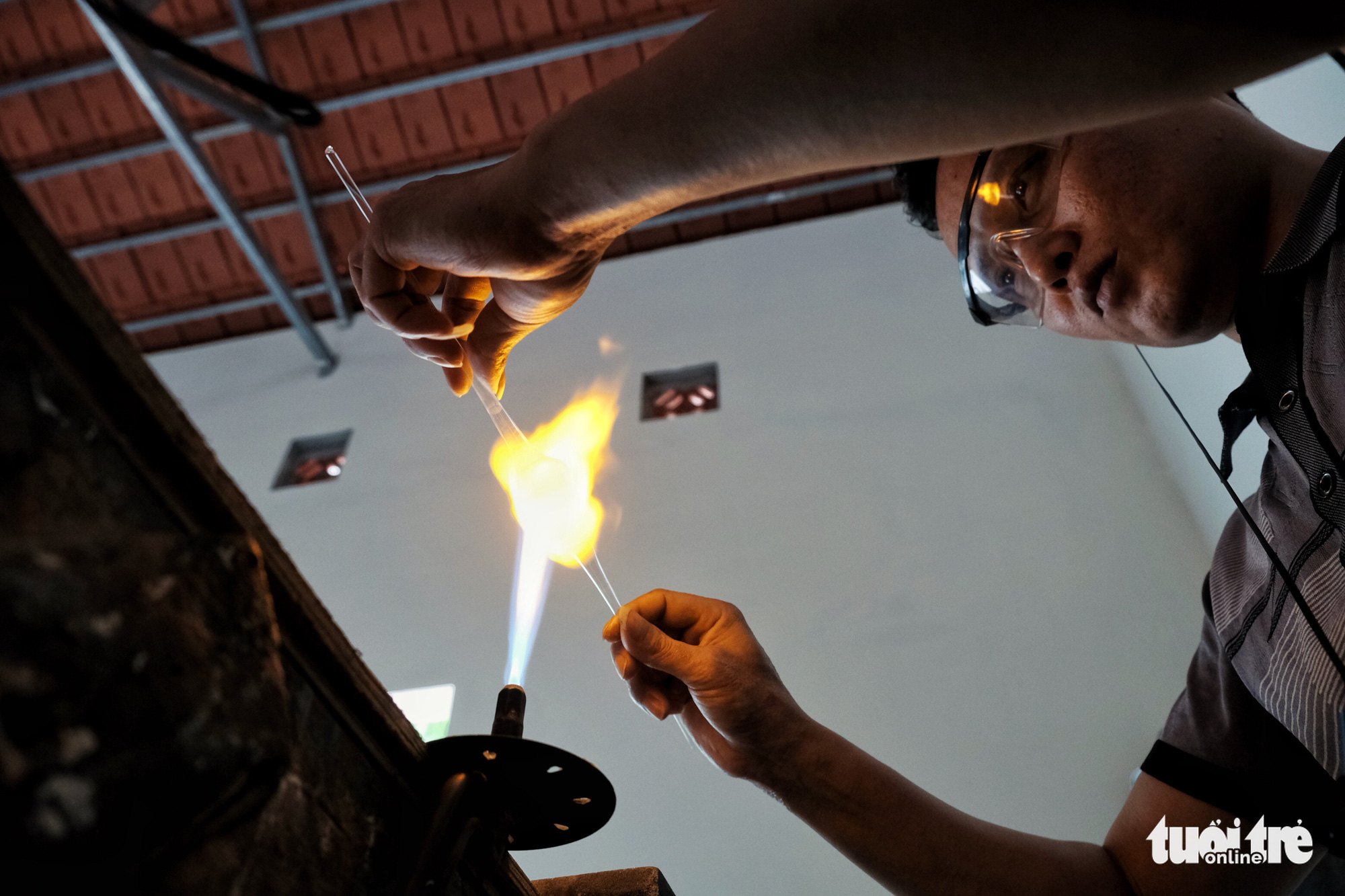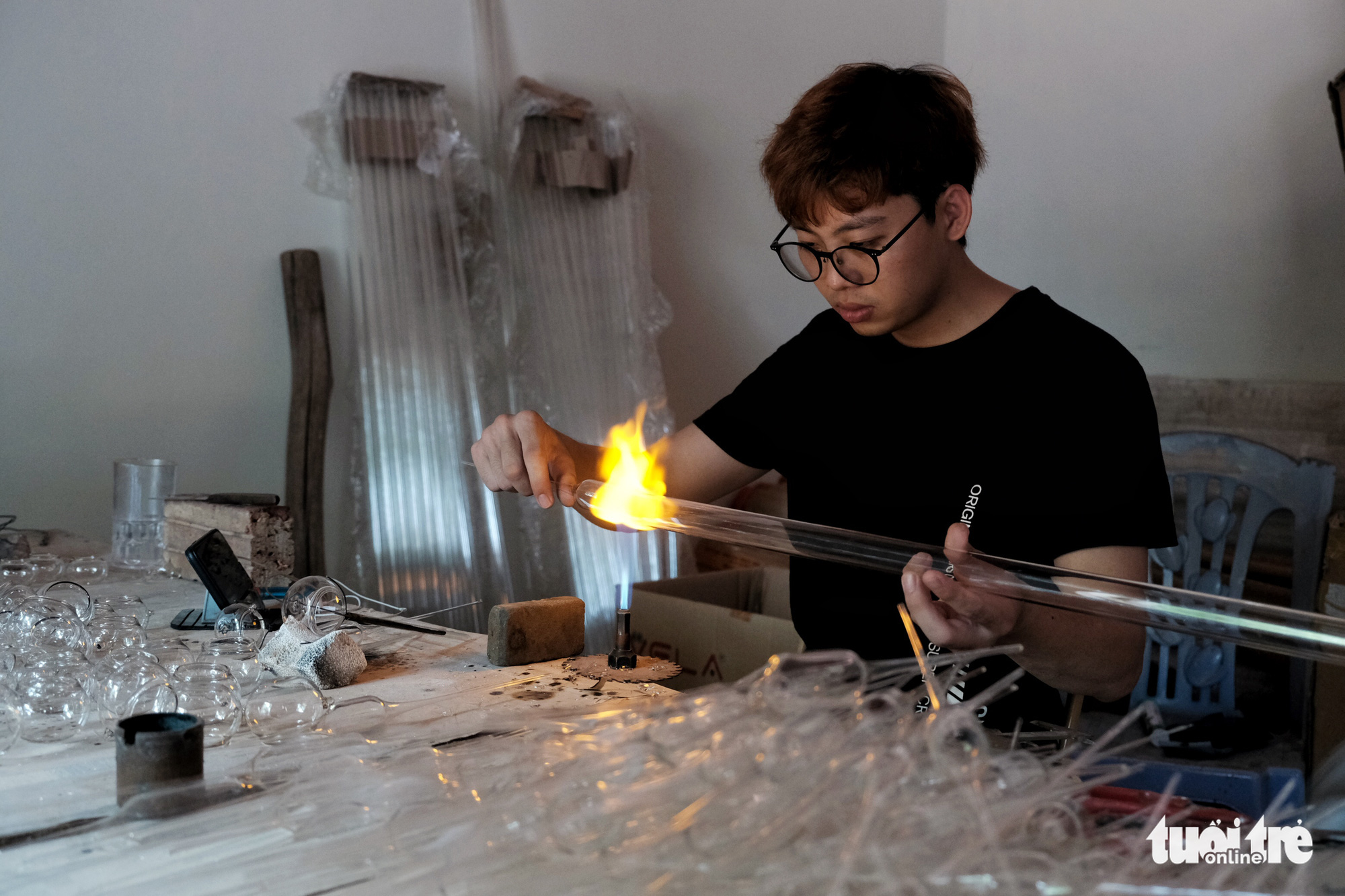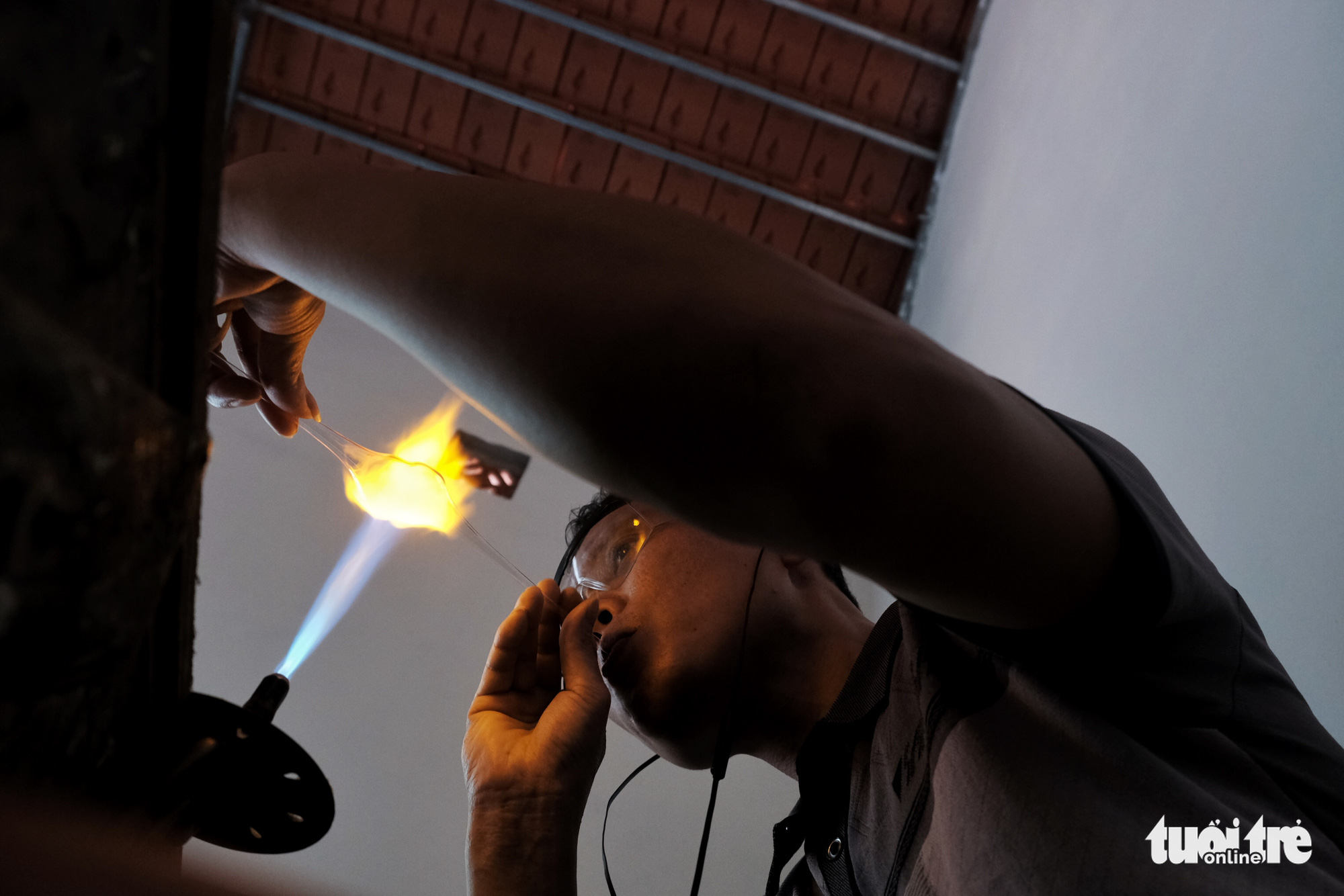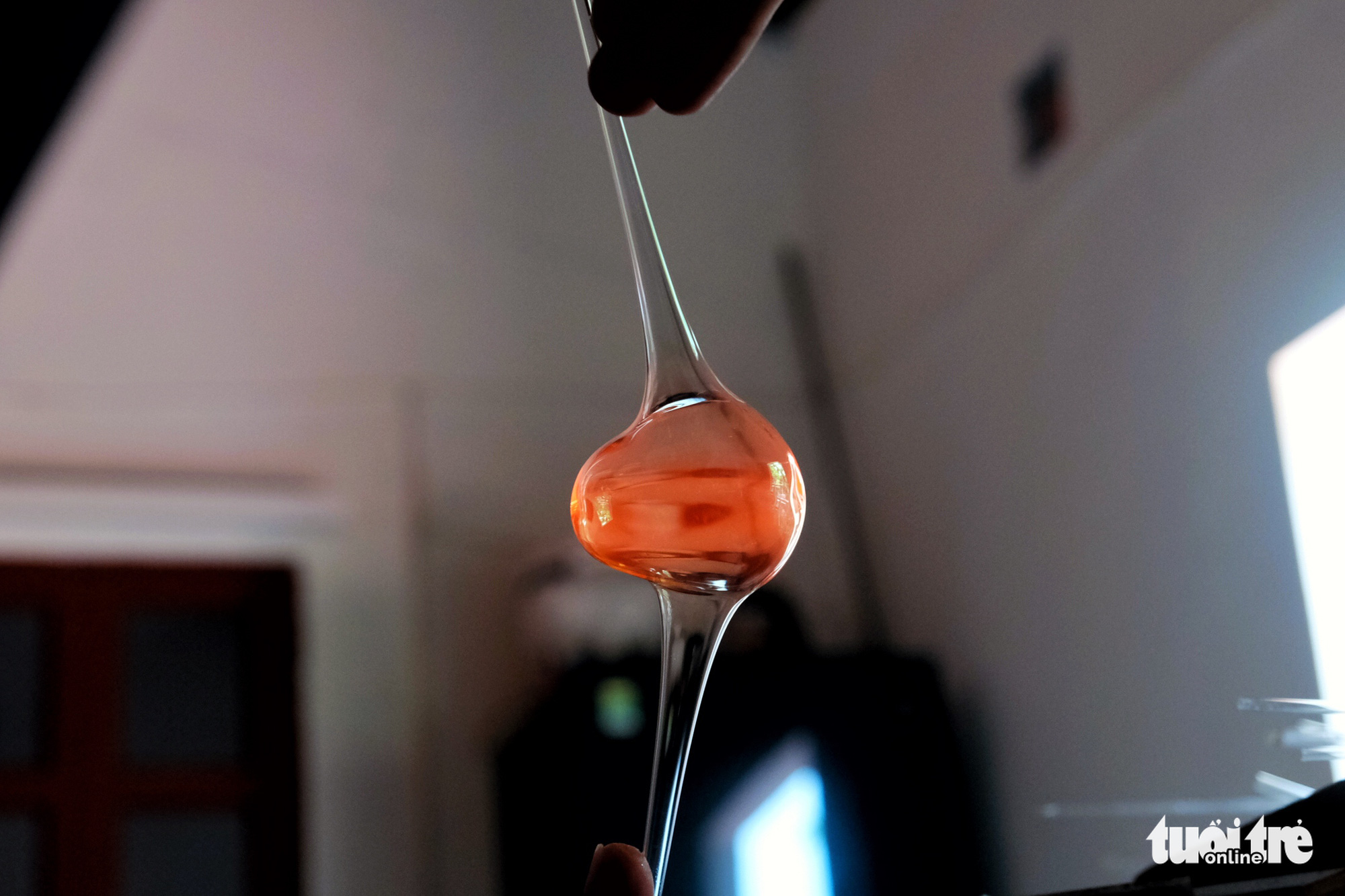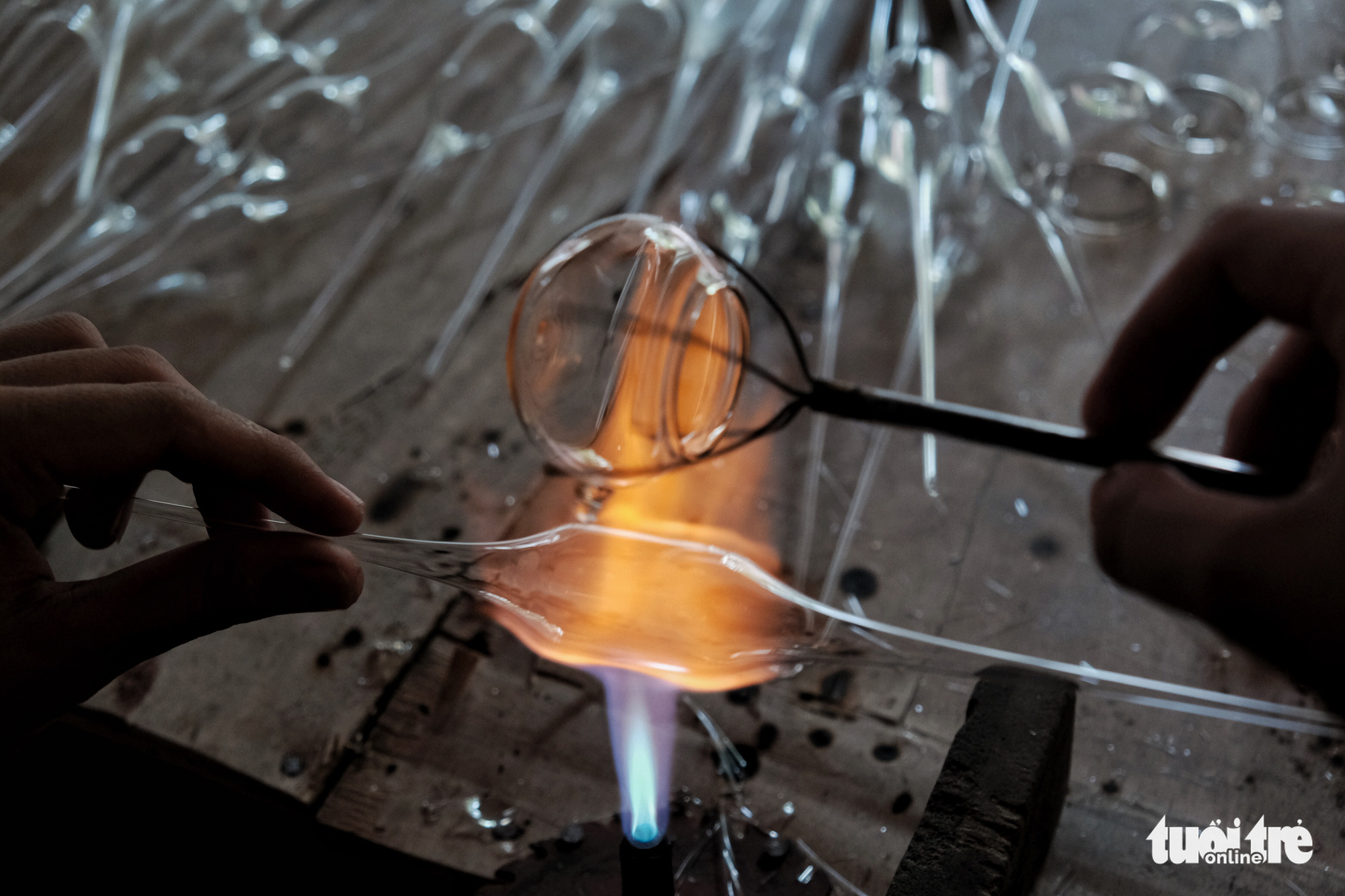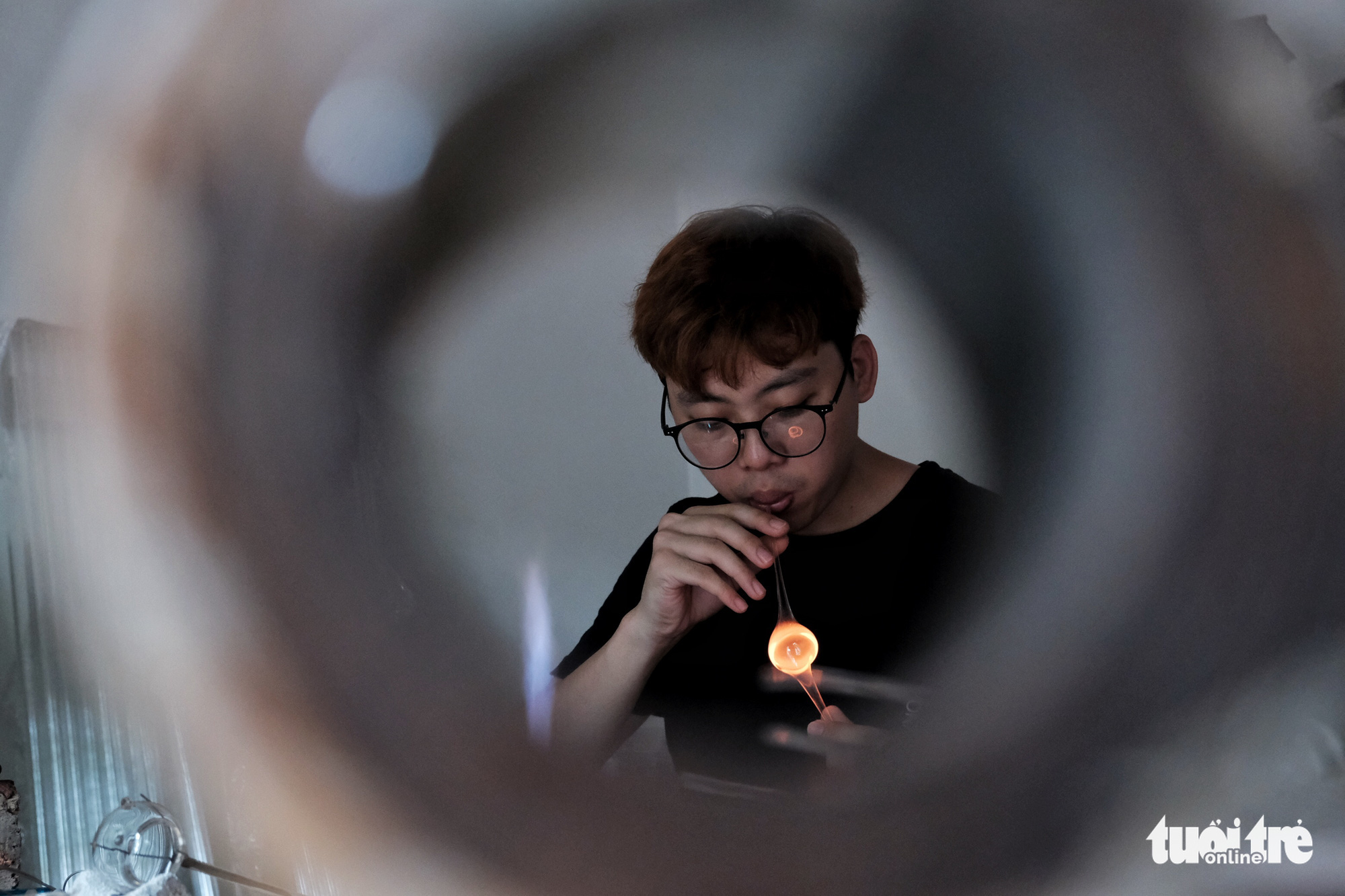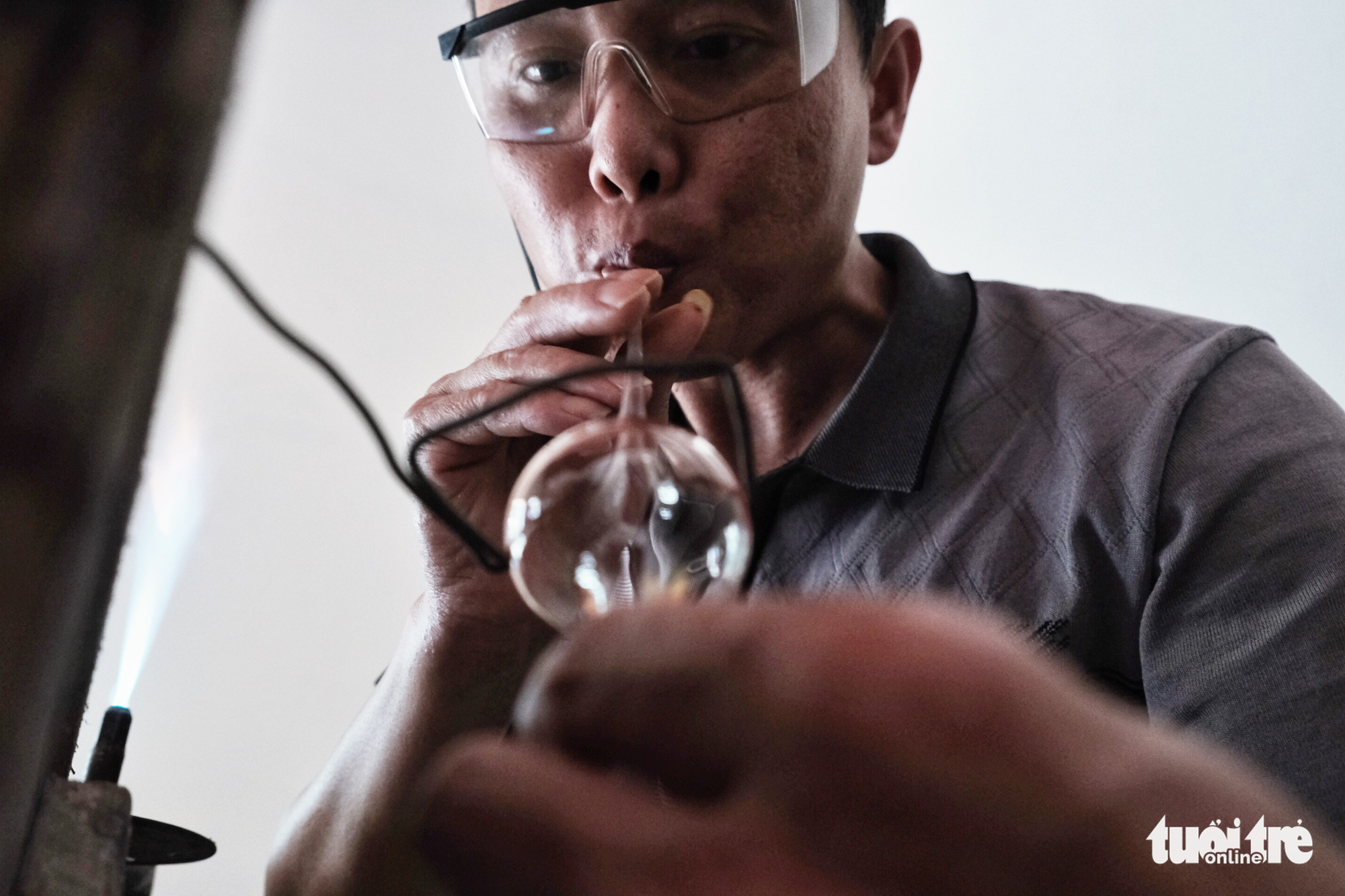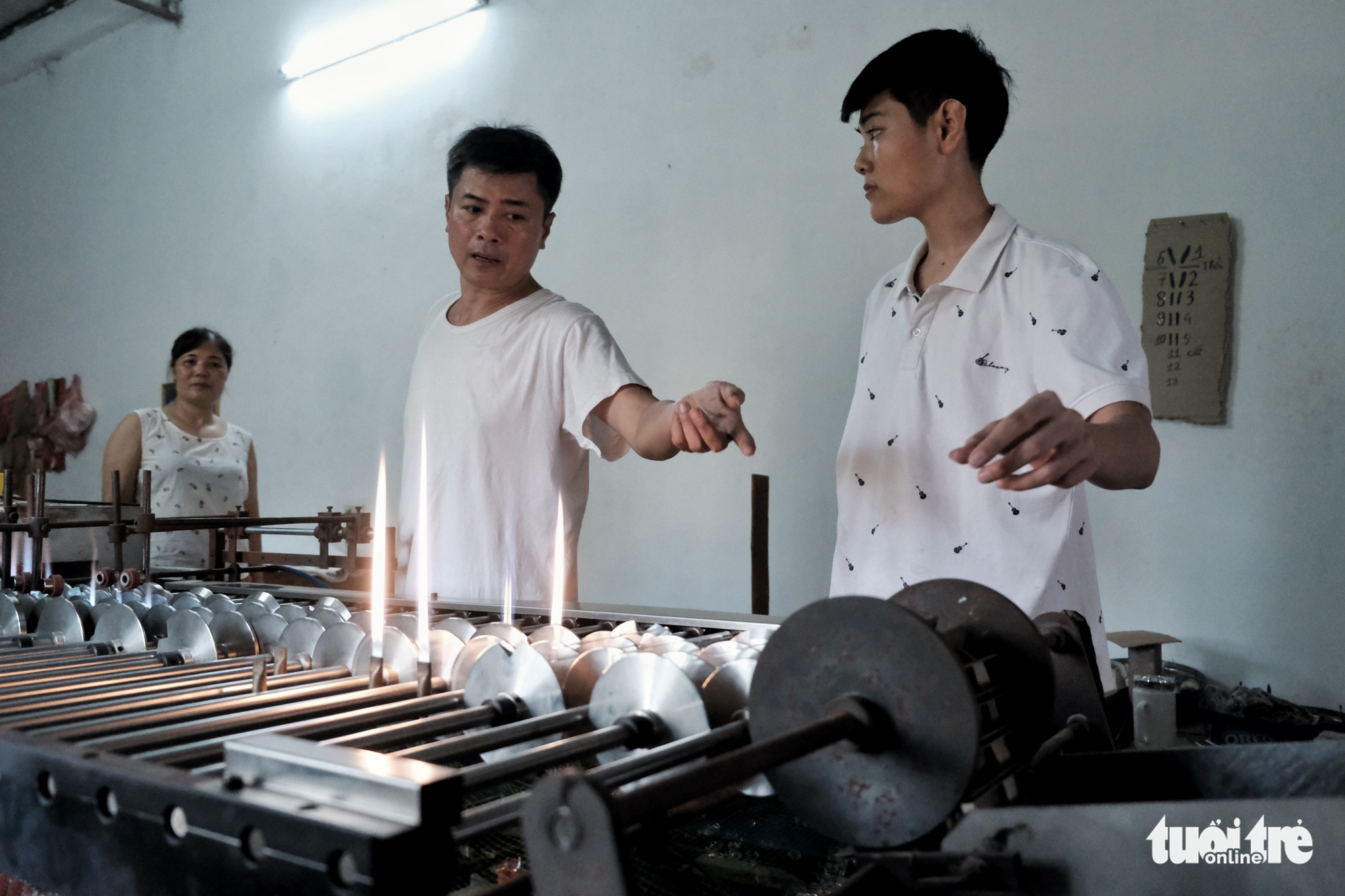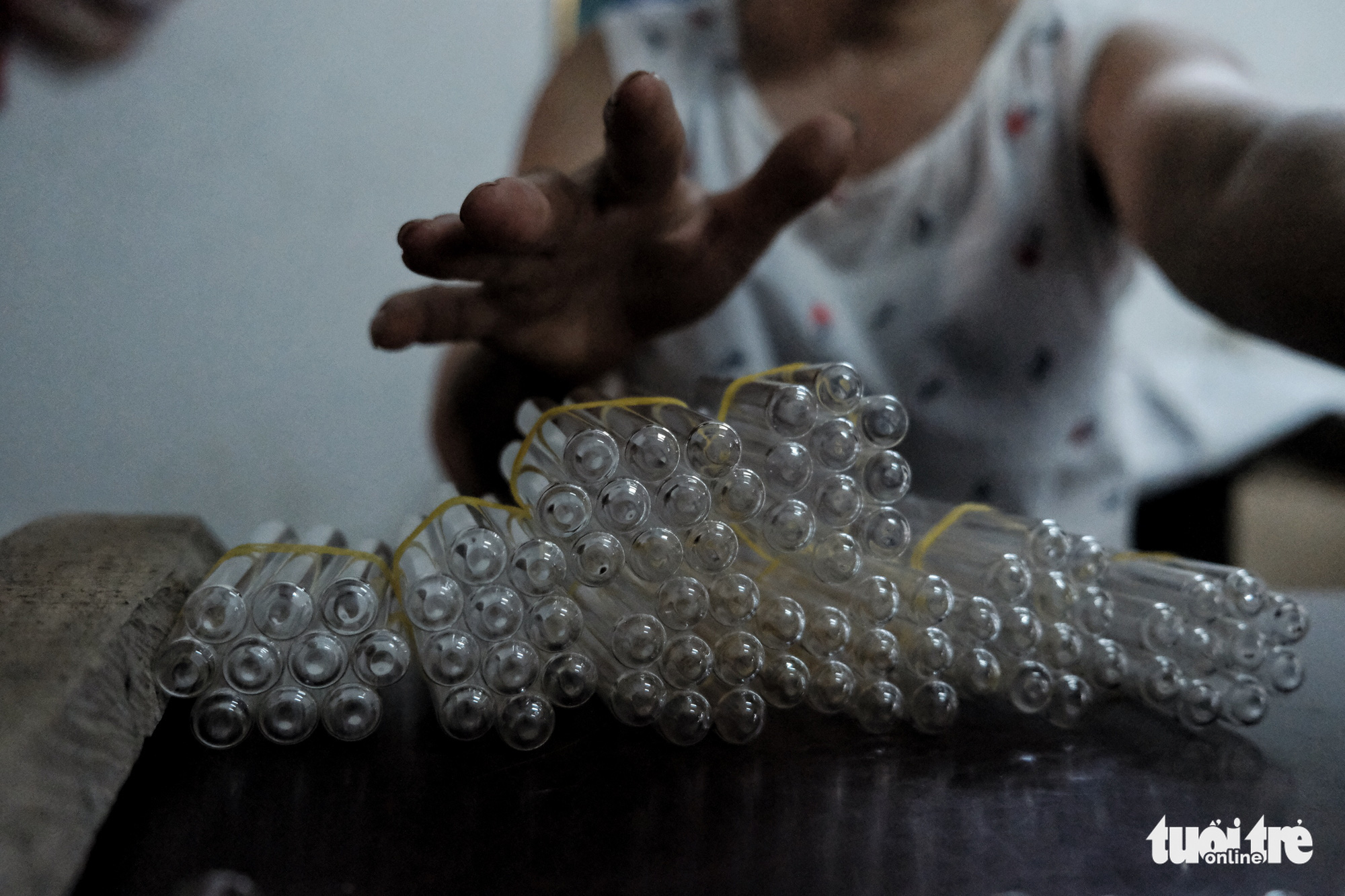Glass-blower Le Xuan Tien and his workers do not let the brutal temperatures blanketing the Vietnamese capital keep them from turning out beautiful pieces of art in their 20-square-meter workshop in Hoang Xa Village, Thong Nhat Commune, Thuong Tin District.
Tien spends his days skillfully blowing air through one end of a long glass pipe in order to create various pieces for his customers.
He refuses to let his swollen, blistered mouth stand in the way of his passion.
Glass-blowing is a family tradition for Tien, with the techniques he uses having been passed down from his grandparents to him over a period of nearly three decades.
Working long days in his small workshop surrounded by broiling flames has taught him the beauty of struggling to produce masterpieces.
For Tien, it is all about the art.
As a business his profits are small, but as an artist his returns are massive.
“The [novel coronavirus disease] outbreak forced the facility to shut down for a period of time so now I’m playing catch up to deliver enough products to my customers,” he explained.
|
|
| Making products out of glass requires many stages, including one which involves heating a glass tube to create shorter pieces. Photo: Mai Thuong / Tuoi Tre |
Tien employs three workers who mainly specialize in producing glass tubes used for feeding birds.
Together, they churn out approximately 1,000 products each day.
“In my parents’ day, nearly the entire commune blew glass, but everyone started giving up the job around ten years ago because of its difficulty and low pay,” said Tien.
Many, Tien says, have even moved out of the commune to find employment in other parts of the country.
“In this village, only four to five households still blow glass in the traditional way,” he said, adding that other households still produce glass, but do so using machinery that can turn out products much faster than old school methods.
Luong Van Trai, the owner of a facility specializing in test tubes, told Tuoi Tre (Youth) newspaper that his family spent VND200 million (US$8,500) on a machine to help increase their productivity.
“The machine can replace the workload of 10 to 15 workers, so the job is much easier. The initial stage, however, still involves manual work to create raw glass tubes,” he said.
|
|
| A glass-blower mixes a blob of molten glass with the end of a long pipe and blows air into the other end, which makes the blob swell. Photo: Mai Thuong / Tuoi Tre |
|
|
| A glass-blower molds blobs of molten glass into products with uniform thickness. Photo: Mai Thuong / Tuoi Tre |
|
|
| A skillful glass-blower needs to know the ‘ripeness’ of glass. As glass is initially exposed to fire, it will appear blue in color before turning white. At that time, a slight blow is enough to mold the blob of molten glass into products of their desired shape, according to the professional glassmith Le Xuan Tien. Photo: Mai Thuong / Tuoi Tre |
|
|
| The glass-blowing technique plays a crucial role in creating products. A glass-blower has to hold his breath properly to produce specific products. Photo: Mai Thuong / Tuoi Tre |
|
|
| Molten glass is blown into a fixed mold so that a certain type of product will be in the same size. Photo: Mai Thuong / Tuoi Tre |
|
|
| The family of Ta Thi Nga is among several households that still maintain a traditional glass-blowing career at Hoang Xa Village, Thong Nhat Commune, Thuong Tin District on the outskirts of Hanoi, Vietnam. Her family produces test tubes, common pieces of laboratory glassware. Photo: Mai Thuong / Tuoi Tre |
|
|
| Ta Thi Nga (left), her husband Luong Van Trai (center), and their son are seen operating a machine which churns out test tubes. Photo: Mai Thuong / Tuoi Tre |
|
|
| The machine is designed to turn out up to a thousand test tubes a day. Photo: Mai Thuong / Tuoi Tre |
Like us on Facebook or follow us on Twitter to get the latest news about Vietnam!

